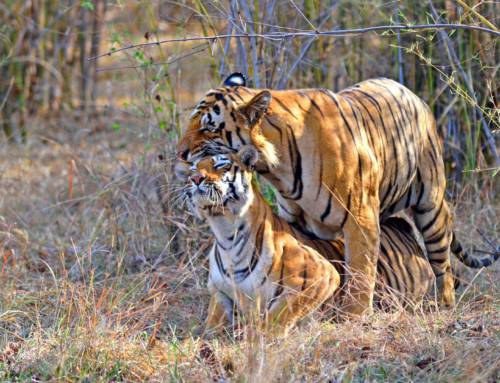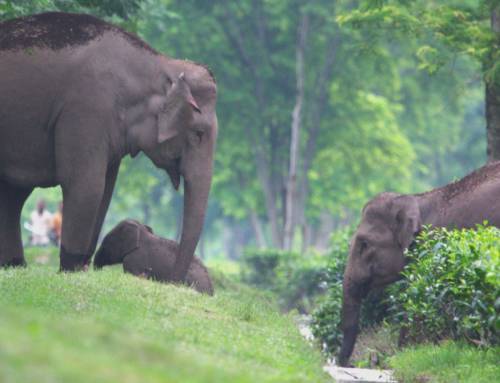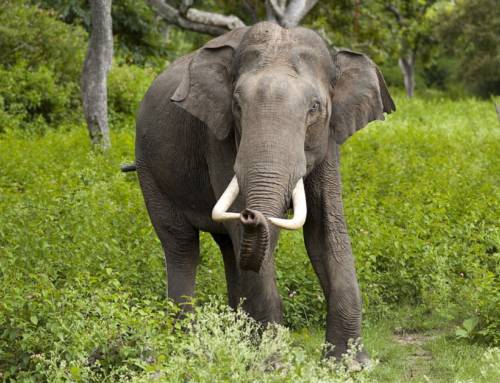Research Article: Dhawale, A. K., & Sinha, A. (2024). Twinning in wild, endangered lion-tailed macaques Macaca silenus in the Anamalai Hills of the Western Ghats, India. Primates, 1-6.
Blog Author: Shashank Dalvi
Key Takeaways:
- The lion-tailed macaque, a species endemic to the Western Ghats, is known for its elusive nature, except for populations inhabiting human-dominated landscapes.
- Typically, these primates give birth to a single infant, as focusing resources on one offspring is a more effective reproductive strategy in the wild.
- Despite this, females in the Puthuthottam forest fragment, Tamil Nadu have successfully raised two sets of twins, a rare and remarkable achievement.
- Access to energy-rich anthropogenic food sources, such as garbage and human provisions, likely increased maternal energy availability, supporting the survival of the twins.
- The mothers exhibited exceptional behavioral adaptability, adjusting their foraging and movement strategies to meet the demands of raising twins.
- These observations highlight the impact of human-altered environments on endangered species, providing valuable insights into both the risks and the adaptive capacities of wildlife.
The Lion-tailed macaque Macaca Silenus (LTM) is a secretive species of primate that is known to be extremely shy, arboreal, and difficult to observe. However, hundreds and thousands of photographs of them are easily available on Google, quite contradictory to the previous sentence. However, more often than not, almost all these images are taken at Valparai. A beautiful high-elevation town surrounded by a mosaic of tea, coffee, forest fragments, Anamalai Tiger Reserve, and Grass Hill National Park. So it’s unsurprising that wildlife has also learnt to live in a dominated landscape. LTMs are just one species that has adapted to living near human settlements.
Dr. Ashni Kumar Dhawale, Dr. Anindya Sinha, and a few other researchers have followed this group of LTMs for decades. Historically confined to a small rainforest fragment, these macaques now forage in tea plantations and even raid garbage bins. Though fraught with risks, this shift has provided access to high-energy food sources. Usually, these primates give birth to a single infant as investing in one young one is a better reproductive strategy. Raising more than one infant in the wild is a daunting challenge. However, females of the LTM group in the Puthuthottam forest fragment have now raised two sets of twins.
In LTMs and other primates, raising twins is exceptionally challenging and a rare event. The energy demands of nursing two infants can overwhelm mothers, especially in the wild, where resources are limited. Historically, twin macaques often fail to survive due to these pressures. However, in this case, discarded human food may have provided a nutritional boost, enabling these mothers to sustain both infants. This highlights a paradox: On one hand, human influence often disrupts ecosystems, and in some cases, it can sometimes create unexpected opportunities for wildlife.
Both these success stories are primarily attributed to the mother LTM’s remarkable care and foraging strategies. Both these mothers showed creativity by adjusting their behaviors, spending more time resting, and taking extra care of the young ones while foraging. They also used creativity while maneuvering through a human-dominated landscape. One female used human-created canopy bridges specifically built for LTMs and other canopy-dwelling species. The second female used rooftops and cables while nursing her newborns.
Both these rare incidences raise critical questions about conservation. Living with humans has provided LTMs with easy and abundant food. However, it has also put them on the path of ever-increasing human-animal conflict and loss of essential foraging skills. The survival of these twins is a testament to the adaptability, resilience, and survivability of LTMs but also underlines the importance of protecting their habitat while mitigating human-animal conflict.
To know more, click here.
Keywords: Primates, Western Ghats, rainforests, habitats




